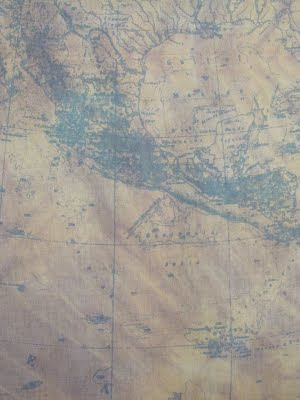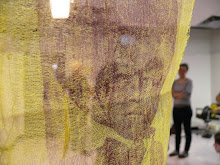What to wear when traveling by air:
http://cargocollective.com/4thamendment
especially after reading this article: U.S. Warns Of Terrorist Bombs Implanted In Humans
July 6, 2011 A new worry for air travelers in the heart of the summer vacation season: The government is warning airlines that terrorists are considering surgically hiding bombs inside humans to evade airport security. And as a result, travelers may find themselves subjected to more scrutiny when flying, especially to the U.S. from abroad.
Bombs-in-the body is not a brand new idea, but recent intelligence indicates a fresh interest in using this method, as people-scanning machines in airports aren't able to detect explosives hidden inside humans. Still, there is no current information that points to a specific plot involving surgically implanted explosives, a U.S. security official said, speaking on condition of anonymity to discuss such sensitive matters.
As airport security has increased since the Sept. 11, 2001, terror attacks, so has the terrorists' creativity in developing methods to get around it. Aviation continues to be a special target, and evidence from Osama bin Laden's compound showed that the al-Qaida leader retained his fascination with attacking airplanes until his death in May.
Last year, it was reported that British officials uncovered intelligence that al-Qaida was seeking to surgically implant bombs inside people, a move some believed was prompted by the use of full-body imaging machines at major airports around the world.
"This is something we've been concerned about for quite some time," said J. Bennet Waters, a security consultant with the Washington, D.C.-based Chertoff Group and a former Transportation Security Administration official in the Bush administration.
The U.S. government has been working with foreign air carriers and governments to identify ways to discover hidden explosives, including bombs potentially hidden inside of humans. Officials did not want to discuss specific security measures under consideration so as not to tip off terrorists who could seek ways to get around them.
Once a terrorist finds a willing suicide bomber and secures the explosive materials, carrying off this tactic is not that difficult, said Chris Ronay, a former chief of the FBI explosives unit.
"It's rather easy and the damage could be rather severe," Ronay said.
On the other hand, Leo West, a retired FBI bomb expert, said concealing the bomb inside the body would greatly increase the difficulties in getting the device to function properly.
"While possible, it is much less likely to work than other scenarios," he said. "There are more practical ways of doing it."
Surgery to implant explosives could be done a couple of days before a planned attack, said James Crippin, an explosives expert in Colorado. In order for it to work, there would need to be a detonation device, and it's conceivable that if the explosive was implanted in a woman's breast, the detonator could be underneath the breast so that all the operative would have to do is press downward, Crippin said.
The al-Qaida offshoot in Yemen has emerged as the most inventive terror organization these days and has been behind two plots that nearly brought down planes over the U.S. The group, known as al-Qaida in the Arabian Peninsula, or AQAP, was behind the Christmas Day attack in 2009 when a Nigerian hid a bomb in his underpants and nearly brought down an airliner over Detroit.
AQAP operatives also concealed bombs in printer cartridges last October, shipping them to Chicago addresses. That attack was thwarted because of specific intelligence about the plot. And in late December, the U.S. received intelligence that the Yemen group was considering hiding explosives in the insulated lining of beverage containers and carrying them aboard airplanes. There was no information pointing to a specific plot with insulated beverage containers, but, like the recent intelligence about the implanted bomb tactic, the Transportation Security Administration warned domestic and foreign carriers to be on the lookout.
"Due to the significant advances in global aviation security in recent years, terrorist groups have repeatedly and publicly indicated interest in pursuing ways to further conceal explosives," TSA spokesman Nick Kimball said, adding that passengers flying into the U.S. may notice additional security. "Measures may include interaction with passengers, in addition to the use of other screening methods such as pat-downs and the use of enhanced tools and technologies."
Officials would not specify which terrorist organizations are thought to be considering this surgical tactic.
White House spokesman Jay Carney said U.S. counterterrorism efforts must evolve as terror groups publicly indicate their interest in finding ways to conceal explosives.
"The idea that terrorists have been looking for other ways to circumvent security measures to target aircraft is not at all surprising," Carney said.




















